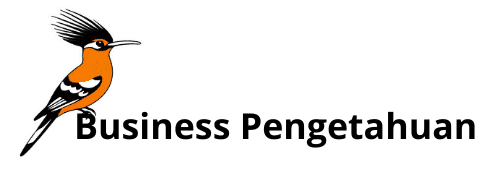SaaS ERP Landscape – In the dynamic realm of business technologies, SaaS ERP (Software as a Service Enterprise Resource Planning) has risen as a transformative force for companies seeking agility, scalability, and operational efficiency. Explore the SaaS ERP universe and discover its role in revolutionizing business resource management.
SaaS ERP Landscape
I. Introduction
A. The Essence of SaaS ERP
SaaS ERP embodies cloud-powered enterprise resource planning systems offered as a service. Distinct from its traditional counterparts, SaaS ERP thrives on a subscription-based model, granting enterprises a unified platform to orchestrate diverse processes sans the extensive infrastructural demands.
B. Embracing Cloud Innovation
The pivot to SaaS ERP signifies a more significant movement towards cloud innovation, empowering businesses to utilize off-site servers for data storage, management, and computation. This paradigm shift ushers in many advantages, including cost savings, enhanced accessibility, and simplified upkeep.
II. Core Attributes of SaaS ERP
A. Unmatched Access and Adaptability
A hallmark of SaaS ERP is its omnipresent access, requiring nothing but an internet connection. This adaptability equips businesses to embrace telecommuting and ensures instantaneous availability of pivotal data.
B. Financial Prudence
By forgoing the hefty initial outlay on hardware and software, SaaS ERP operates on a subscription basis, encompassing maintenance, updates, and support within its regular fees, thus streamlining expenses.
C. Effortless Scalability
Whether scaling up or modulating according to demand shifts, SaaS ERP’s fluid scalability aligns perfectly with a company’s changing requisites, positioning it as an optimal choice for any business stature.
D. Consistent Upgrades
Maintenance and upgrade duties fall under the purview of SaaS ERP vendors, guaranteeing that enterprises consistently benefit from the most recent software iterations, relieving IT departments from such burdens, and promptly implementing security enhancements.
III. Benefits of SaaS ERP
A. Swift Deployment
Whereas traditional ERP setups are notorious for their protracted and intricate deployment, SaaS ERP shines with its expedited launch times, capitalizing on uniform processes and pre-set configurations.
B. Diminished Ownership Costs
The recurring nature of SaaS ERP’s subscription model diminishes the overall ownership costs. Absent the necessity for elaborate hardware, continual upkeep, or specialized IT staff, businesses can reallocate their fiscal resources more effectively.
C. Collaborative Synergy
SaaS ERP nurtures a collaborative ethos with its real-time, centralized data repository, bolstering teamwork across office-bound and remote personnel alike, thereby fortifying communication and synchronicity of information.
D. Fortified Security Protocols
SaaS ERP purveyors invest substantially in stringent security protocols to defend client data. This typically encompasses encryption, multi-factor authentication, and relentless surveillance to thwart potential security breaches.
IV. Navigating the SaaS ERP Terrain
A. Security Hurdles
Despite SaaS ERP providers’ focus on security, businesses remain responsible for safeguarding sensitive data in the cloud. Implementing stringent cybersecurity protocols and adhering to industry regulations is imperative.
B. Customization Constraints
The ability to tailor SaaS ERP systems to unique business workflows may be restricted. Organizations must ascertain whether the system’s default settings can accommodate their distinct operational needs.
C. Internet Reliance
The cloud-based nature of SaaS ERP necessitates a stable internet connection. Companies in areas with spotty internet service might struggle with consistent system usage.
V. Selecting an Apt SaaS ERP System
A. Sector-Specific Necessities
Distinct sectors demand specialized ERP functionalities. Firms should seek out SaaS ERP offerings that provide solutions tailored to their industry’s unique challenges, ensuring a harmonious integration.
B. Integration Proficiency
A SaaS ERP system should integrate flawlessly with pre-existing systems and applications, preventing any operational hiccups. Compatibility with other corporate tools is critical to maintaining a streamlined workflow.
C. Vendor Credibility and Assistance
The choice of a SaaS ERP provider is critical. Companies must evaluate the provider’s market standing, client feedback, and the extent of support offered to guarantee a dependable alliance.
VI. Success Narratives in SaaS ERP
A. Flourishing Enterprises
Examining the success stories of enterprises that have adopted SaaS ERP can illuminate its positive impact on productivity, teamwork, and overall corporate triumph.
B. Gleaned Insights
Studying the experiences and takeaways from successful SaaS ERP deployments can guide businesses through potential obstacles and inform their decision-making process when considering adoption.
VII. On the Horizon for SaaS ERP
A. AI and Machine Learning Synergy
Looking ahead, SaaS ERP is set to embrace AI and machine learning further, promising to refine automation, predictive insights, and strategic decision-making processes.
B. Enhanced Data Analysis
The evolution of SaaS ERP will likely bolster its data reporting and analytical capabilities, offering enterprises more sophisticated instruments for informed decision-making.
C. Mobile Advancements
With the progression of mobile technologies, SaaS ERP systems are expected to enhance their mobile features, enabling users to access essential data and execute tasks remotely efficiently.
VIII. Conclusion
A. Embracing SaaS ERP’s Future
In summary, SaaS ERP heralds a significant transformation in business resource and operational management. Its approachability, cost efficiency, and scalability pave the way for a new chapter of enterprise agility and adaptability. As the corporate world increasingly adopts cloud-based solutions, SaaS ERP stands as a beacon of technology’s revolutionary potential.

